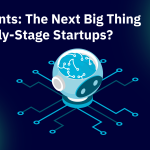Quick Take:
At Web Summit, AI startups showcased tools aimed at replacing traditional designers, but experts argue that while AI enhances workflows, human designers remain irreplaceable for premium, nuanced work.
The AI Wave Hits Design
Web Summit highlighted a growing trend: AI startups developing tools that promise to replace traditional design roles. From logo generators to platforms that convert Figma designs into code, these technologies aim to streamline processes and reduce costs. Yet, this raises questions about whether AI can meet the creative and strategic demands of professional design.
One attendee noted, “AI can produce appealing results quickly, but commercial application is still in its infancy, often falling short in usability and consistency.”
Designers Adapt or Face Obsolescence
For designers, AI presents both an opportunity and a challenge. Tools like generative AI can automate repetitive tasks, freeing designers to focus on more strategic work. However, reliance on AI without integrating human expertise risks creating shallow, cookie-cutter designs.
Experts argue that businesses seeking premium branding will continue to value human designers who can interpret client needs and deliver bespoke solutions. As one commenter remarked, “The successful startups will blend AI power with traditional know-how.”
AI’s Role in Design Teams
While AI tools are improving, they remain far from autonomous creativity. They depend on existing datasets, limiting their ability to innovate or produce culturally nuanced work. Designers who leverage AI as a collaborative tool are likely to thrive, positioning themselves as indispensable assets within evolving workflows.
A recurring theme at Web Summit was the idea that human designers who master AI tools will hold a competitive edge, becoming “prompt engineers” who can extract the best results from these platforms.
The Road Ahead
Despite fears, the consensus among professionals is clear: AI will reshape, not replace, the design industry. Businesses may turn to AI for cost-effective solutions, but premium markets will still demand the human touch.
As the industry adapts, designers face a choice: embrace AI to enhance their skills or risk being left behind. For startups, blending AI innovation with human creativity may be the winning formula in this new design frontier.


